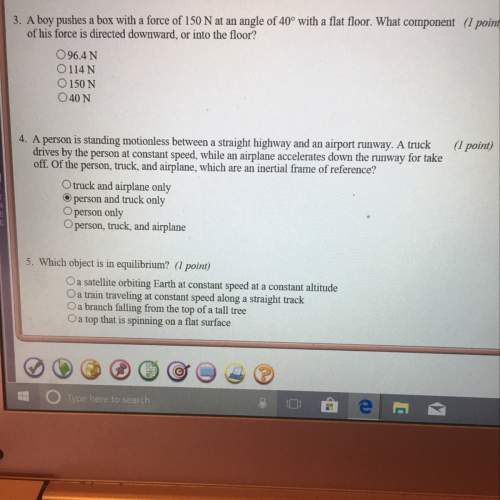
Physics, 13.07.2019 05:10 kutsevjulianna
How should policymakers and providers make decisions when faced with a dearth of evidence? do you prefer a more cautious approach that does not approve procedures or drugs until evidence is available or a more aggressive approach that encourages experimentation and use of treatments that appear to be effective? what about medical care for children, who are generally excluded from clinical and research trials for ethical reasons? when, if ever, is it appropriate for insurers to cover or the government to pay for treatments that are not proven effective?

Answers: 1
Another question on Physics

Physics, 21.06.2019 22:00
In a wind tunnel the speed changes as the cross sectional area of the tunnel changes. if the speed in a 6' x 6' square test section is 100 mph, what was the speed upstream of the test section where the tunnel measured 20' x 20'? use conservation of mass and assume incompressible flow. conservation of mass requires that as the flow moves through a path or a duct the product of the density, velocity and cross sectional area must remain constant; i.e., that ova-constant. a model is being tested in a wind tunnel at a speed of 100 mph if the flow in the test section is at sea level standard conditions, what is the pressure at the model's stagnation point? (a) the tunnel speed is being measured by a pitot-static tube connected to a u- tube manometer. what is the reading on that manometer in inches of water? (b) at one point on the model a pressure of 2058 psf is measured. what is the local airspeed at that point?
Answers: 2

Physics, 22.06.2019 04:10
You will be galileo perform the experiment to determine if objects with different mass fall at the same, or different, rates in the air and in a vacuum. (refer to the walk-through video to locate the online lab within the online textbook).
Answers: 2

Physics, 22.06.2019 04:50
Unpolarized light whose intensity is 1.19 w/ is incident on a polarizer. (a) what is the intensity of the light leaving the polarizer? (b) if the analyzer is set at an angle of = 41.0∘ with respect to the polarizer, what is the intensity of the light that reaches the photocell?
Answers: 1

Physics, 22.06.2019 11:20
If the radius of curvature of the cornea is 0.75 cm when the eye is focusing on an object 36.0 cm from the cornea vertex and the indexes of refraction are as described before, what is the distance from the cornea vertex to the retina? express your answer to two significant
Answers: 3
You know the right answer?
How should policymakers and providers make decisions when faced with a dearth of evidence? do you p...
Questions

History, 05.05.2020 14:15

Mathematics, 05.05.2020 14:15

Mathematics, 05.05.2020 14:15


Chemistry, 05.05.2020 14:15

English, 05.05.2020 14:15

Social Studies, 05.05.2020 14:15

English, 05.05.2020 14:15

Mathematics, 05.05.2020 14:15




Biology, 05.05.2020 14:15



Mathematics, 05.05.2020 14:15

Mathematics, 05.05.2020 14:15

History, 05.05.2020 14:15





